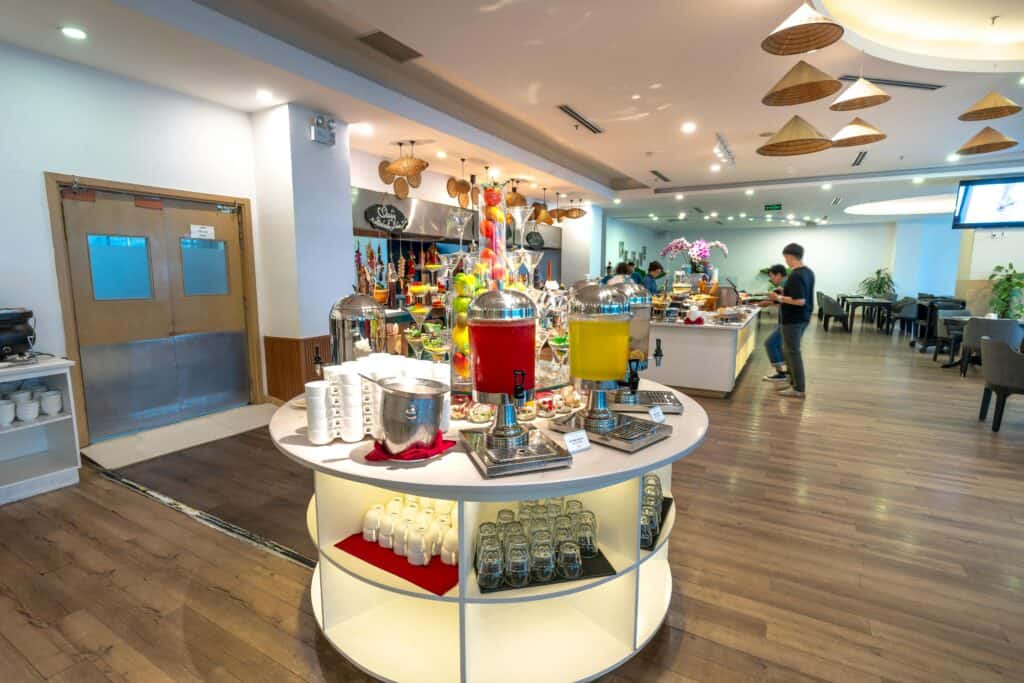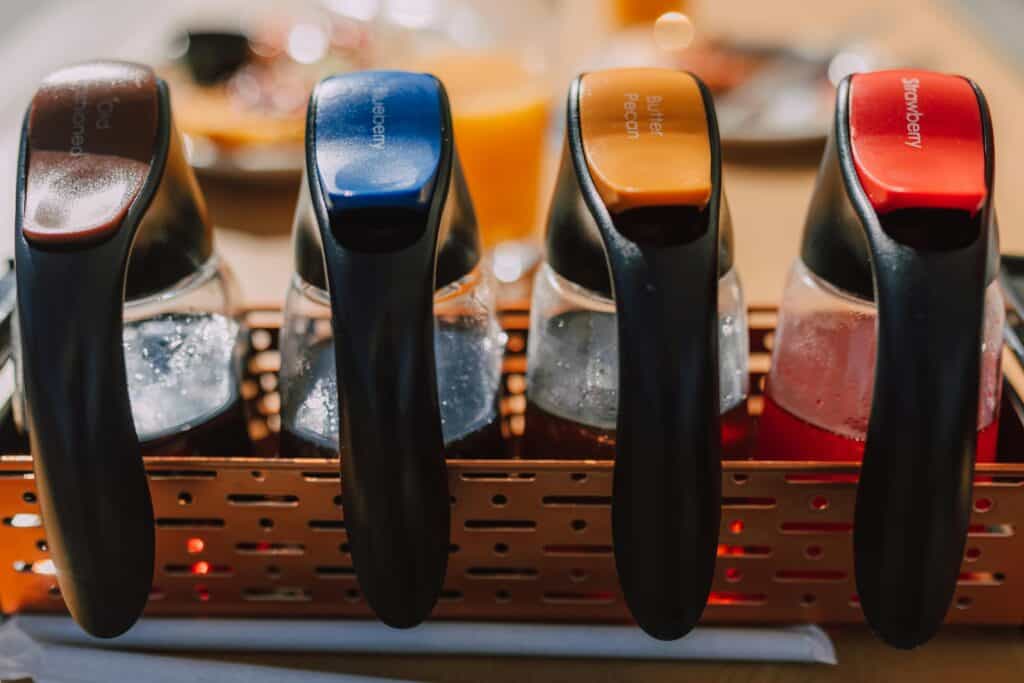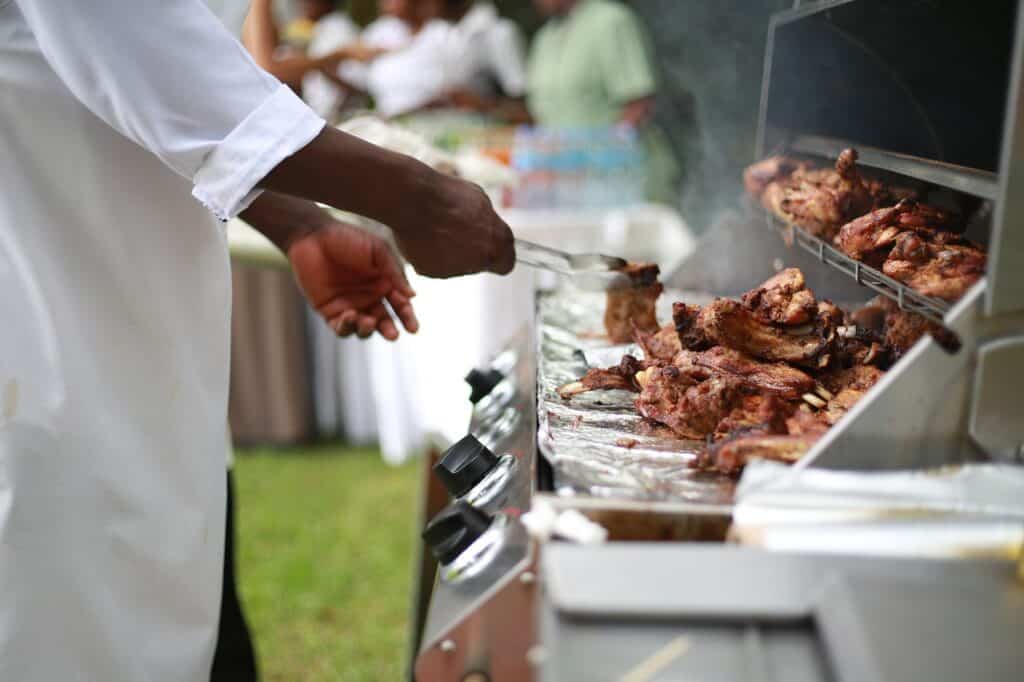We may earn money or products from the companies mentioned in this post. This means if you click on the link and purchase the item, I will receive a small commission at no extra cost to you ... you're just helping re-supply our family's travel fund.

Hotel breakfast buffets often feel like a harmless perk: silver domes, bright juice dispensers, and a promise that morning will be easy. Behind that spread, though, sits a delicate balance of time, temperature, and shared serving habits. Staff may be rushing between stations, guests may ignore tongs, and food can sit longer than anyone realizes. What looks generous and convenient can quietly become a perfect setup for germs, off flavors, and days of regret instead of a calm start.
Lukewarm Scrambled Eggs In Deep Pans

Those big hotel pans of scrambled eggs may look comforting, but they can be trouble when heat is uneven or low. Eggs that sit in the warm-but-not-hot zone invite bacterial growth, especially once guests start lifting lids repeatedly. When edges are rubbery, the surface looks dry, and steam seems weak, it often signals a pan that has lingered far past its ideal window. Food safety guidelines expect eggs to stay truly hot, not just vaguely warm under dim bulbs.
Cut Fruit Sitting In Shallow Bowls

Colorful bowls of melon cubes, berries, and pineapple feel like the healthiest corner of the buffet. Once fruit is cut, though, its protective skin disappears and every extra minute at room temperature matters. Guests often lean over the bowls, drop used utensils, or let serving spoons slide into the mix. If the fruit looks glossy, wilted at the edges, or sits in a pool of sweet liquid, it has likely been out too long for comfort, no matter how pretty it seems.
Communal Yogurt Tubs And Open Parfaits

Large shared tubs of yogurt and make-your-own parfait stations encourage repeated dipping from multiple spoons. As the morning rush builds, people may swap serving spoons with cereal, drizzle extra toppings directly into the tub, or return after sampling a bite. Open dairy at mild temperatures becomes an easy home for bacteria, especially once fruit syrups and granola crumbs join the party. Sealed single-serve cups, while less dramatic to look at, usually offer safer control over freshness and cross-contact.
Self-Serve Waffle Batter Dispensers

Hotel waffle stations feel festive, and thick batter flowing from a shared dispenser seems efficient. In practice, those containers can be hard to clean thoroughly between uses, and batter sometimes sits longer than printed signs suggest. Warm ambient temperatures in a busy breakfast room give yeast and bacteria plenty of time to wake up. Drips running down the side, crusted nozzles, and a sour smell around the station often hint that turnover and sanitation are not keeping pace with guest enthusiasm.
Open Bowls Of Communal Scrambled Meats

Trays of chopped sausage, bacon bits, or mixed breakfast meats that guests scoop into their own dishes may seem handy. When those items are chopped small and left in shallow pans, they lose heat quickly and move in and out of the danger zone. People who hover with their plates can cough or talk directly over the food, and tongs sometimes fall into the pan and stay there. Whole pieces kept hot and served with dedicated utensils generally face fewer of those risks.
Shared Syrup Bottles And Sticky Condiment Pumps

Maple-style syrups, chocolate sauces, and fruit toppings often live in communal bottles or pumps that dozens of hands touch before coffee finishes. Sticky handles and dried drips signal that full cleaning may not happen between seatings. Inside the containers, sugar-rich liquids can sit for days, warmed repeatedly by room air and warm plates. Bacteria love that combination of sweetness and time. When lids look crusted and nozzles seem neglected, the story they tell rarely ends in pristine sanitation.
Butter Pats And Creamers Left Without Ice

Small foil-wrapped butter pats and mini creamers look harmless scattered in bowls near the coffee urns. On busy mornings, staff refill them quickly and may skip the ice bath that keeps them properly chilled. As the service stretches, the packets and cups grow soft, and condensation pools on the bottom of the container. Dairy products that warm and cool repeatedly can harbor growth that no one sees. A slightly sour smell or oily sheen around the bowl is a warning many people miss.
Tongs And Utensils Left On Countertops

Serving tongs and spoons pick up more than pancakes. When rushed guests set utensils down on bare countertops or rest them partly in and partly out of pans, they collect droplets, crumbs, and whatever was wiped there earlier. Small children sometimes grab handles with both hands, then place them back without staff noticing. Those tools then return to the food, spreading everything they touched. A station where utensils constantly slip off plates or land directly on surfaces rarely lines up with best hygiene practices.
Bulk Cereal Hoppers And Dispensers

Tall cereal dispensers make breakfast look organized and modern, yet they can quietly collect dust, crumbs, and moisture. Product at the bottom may be weeks older than the fresh layer poured in at the top. Curious kids often twist handles repeatedly or let cereal spill onto trays, then scoop it back with bare hands. Without frequent disassembly and cleaning, corners and seams hide stale flakes and insect fragments. The cheerful click of the dispenser does not reveal what sits in those crevices.
Hotel Buffet Sushi Or Smoked Fish

When hotels try to impress with sushi, smoked salmon, or other chilled seafood on the breakfast spread, the stakes rise. These items demand strict temperature control and careful turnover, yet they sometimes sit alongside cheeses and fruit with minimal ice. Once the crowd thins, pieces can linger for long stretches while still looking visually appealing. Seafood that spends too long in the gray area between fully cold and room temperature carries higher risk than most breakfast foods, especially in a self-serve setting.